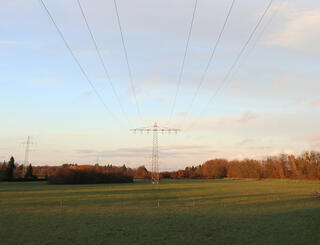Energy Attribute Certificates (EACs) 101: Your Guide to Understanding Unbundled EACs

By Liam Garvey, Senior Analyst, Sustainability and Environmental Attributes
What is an EAC?
For corporations and other organizations committed to reducing greenhouse gas (GHG) emissions and contributing to a cleaner, more resilient grid, the procurement of renewable energy can be an effective way to achieve these objectives. And while renewable energy is a cornerstone of these efforts, energy attribute certificates (EACs) play a critical role in ensuring the integrity of the system and establishing a single, unambiguous claim to each MWh of renewable energy produced.
An EAC is a tradeable and trackable market-based instrument that represents the right to the renewable attribute from electricity produced by a renewable energy project. An EAC, which is produced when one MWh of electricity is generated from a renewable energy resource, is a way to track and claim that renewable energy.
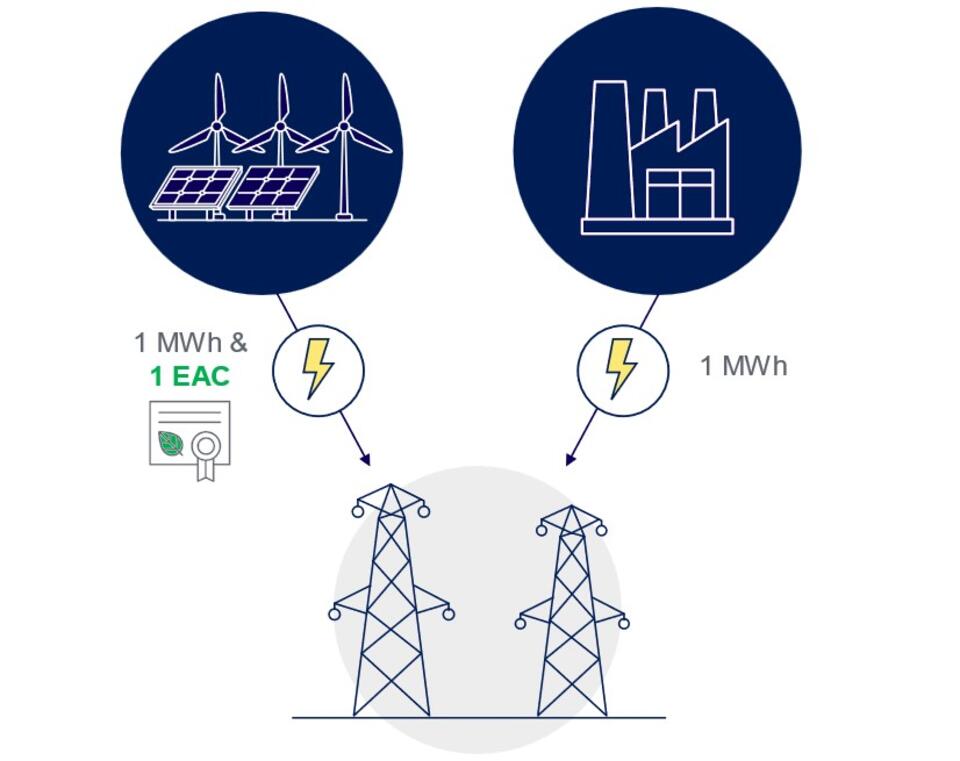
Regardless of the objectives of a corporate renewable energy procurement strategy - incentivizing new renewable energy on the grid, responding to customer demands, or meeting near-term GHG reduction goals - the retirement of an EAC is a critical step in making clean energy claims. Under market-based Scope 2 accounting, by purchasing and retiring an EAC for every MWh of electricity consumed, a company can claim the renewable energy attributes of the generation, which can reduce or eliminate their market-based Scope 2 emissions.
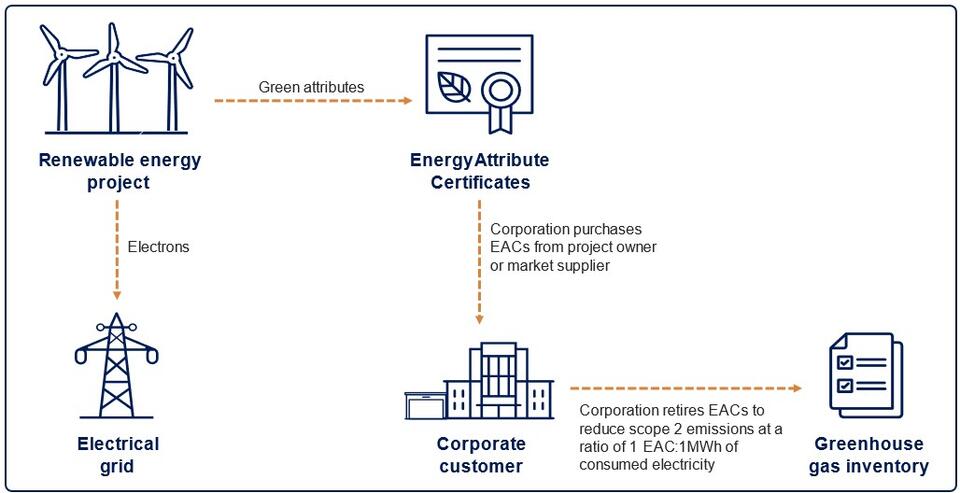
Bundled vs. Unbundled EACs
A corporate buyer has the option to purchase EACs with or without the associated electricity, known as ‘bundled’ or ‘unbundled’ EACs. Bundled EACs are sold together with the associated electricity from a specific renewable energy project. Bundled EACs are often delivered via a power purchase agreement (PPA), which can be physical or virtual. For example, if a buyer purchases 50,000 megawatt-hours (MWh) of electricity and EACs from a wind farm through a PPA, the buyer can claim that they have purchased that volume of renewable energy from that specific wind farm.
Conversely, unbundled EACs are generated by renewable energy projects but are unrelated to the associated electricity, retaining only the environmental claim. Using the same example, if a buyer purchases 50,000 unbundled EACs, the buyer now holds the rights to 50,000 MWh of renewable electricity. The 50,000 MWh that flow onto the grid from the wind project are no longer distinguished as renewable energy and are considered standard grid mix because the EAC buyer retains the environmental claim.
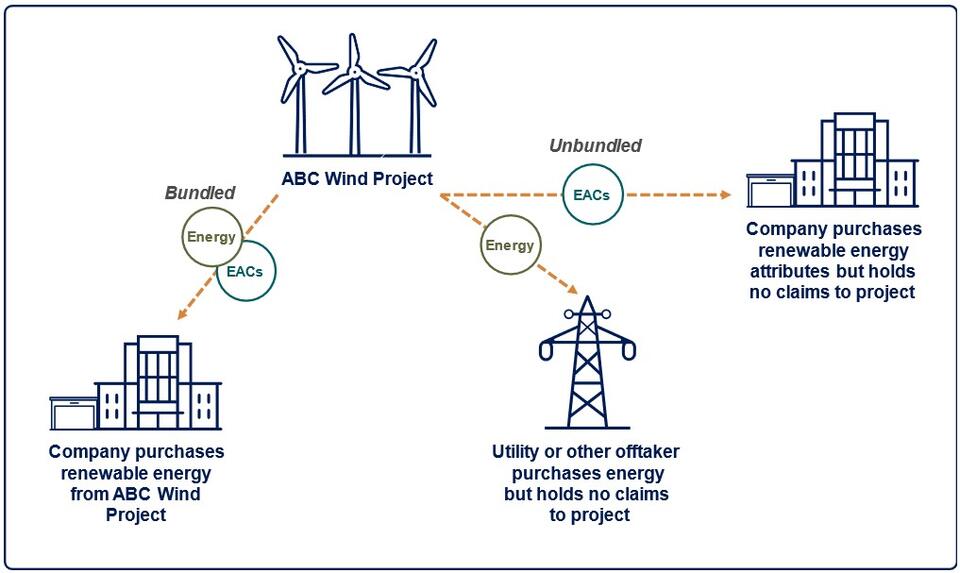
Global EAC Market Boundaries
EACs may go by different names based on geography and market. A Renewable Energy Certificate (REC) is the specific instrument that is utilized in the United States and Canada. Other common terminology includes Guarantees of Origin (GOs) in most of Europe and I-RECs for many other.
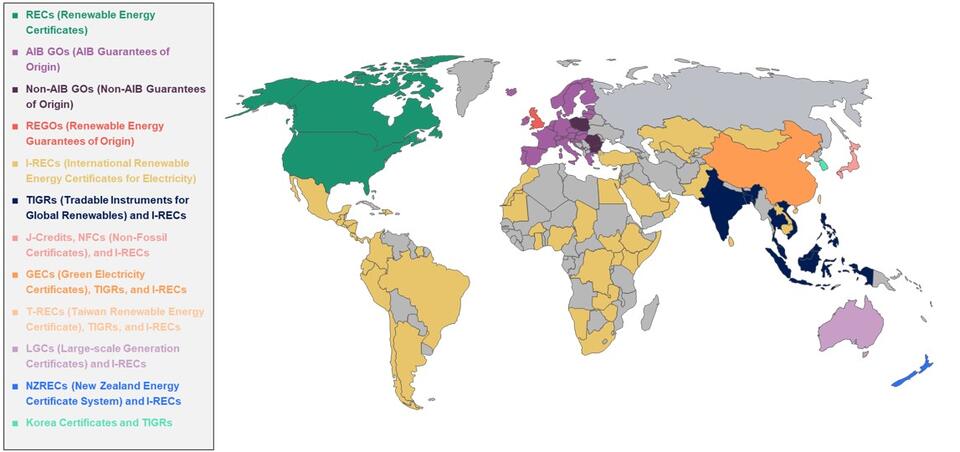
EAC Purchasing
EACs are sold in one-year or multi-year strips. For spot market purchases, EACs are purchased for immediate or near-term delivery. For multi-year strips, EACs are purchased for delivery in future years. Most buyers will purchase EACs that are generated from renewable energy projects anywhere within that specific country or market boundary. However, some buyers will choose to purchase EACs from specific projects, which will typically result in higher costs.
There are several factors that make companies ideal candidates for unbundled EAC purchases:
- Companies beginning their sustainability journeys.
- Companies taking their first steps in sustainability or renewable energy can benefit from unbundled EAC procurement. It is a simple and cost-effective way to claim renewable energy use without the complexity of more advanced procurement strategies like PPAs or onsite renewable installations.
- Bridging the gap until long-term solutions are in place.
- Unbundled EACs can fill temporary gaps in coverage before a higher impact solution is in place or when a renewable energy project underdelivers. For example, after signing a PPA, it may take several years for the project to start generating electricity. During this interim period, a company can procure EACs to maintain renewable energy claims. Additionally, because wind and solar production varies annually, companies can supplement their PPA with additional EACs to make up any shortfalls, ensuring continuous progress towards renewable energy or sustainability goals.
- Lack of local renewable energy options.
- In regions where renewable energy options are limited or unavailable from local utilities or energy retailers, unbundled EACs offer a flexible solution. A company can always purchase EACs, regardless of their location, utility provider, or market boundaries defined by groups like RE100 or the Greenhouse Gas Protocol, enabling them to meet sustainability targets even when local options are insufficient.
- Companies whose electricity consumption is too low to pursue other renewable energy procurement strategies.
- EACs can be procured in any amount, making them an easier solution for buyers with lower electricity consumption.
Unlike with some other types of renewable energy procurements, EAC buyers are not limited by credit rating in most circumstances. In addition, EACs are typically a shorter commitment when compared to PPAs or other longer-term contracts. And finally, while EACs are inherently cost additive, they do allow corporates to achieve cost certainty.
If your company is interested in exploring potential unbundled EAC options or discussing other renewable procurement strategies, please reach out to our team of experts here.
